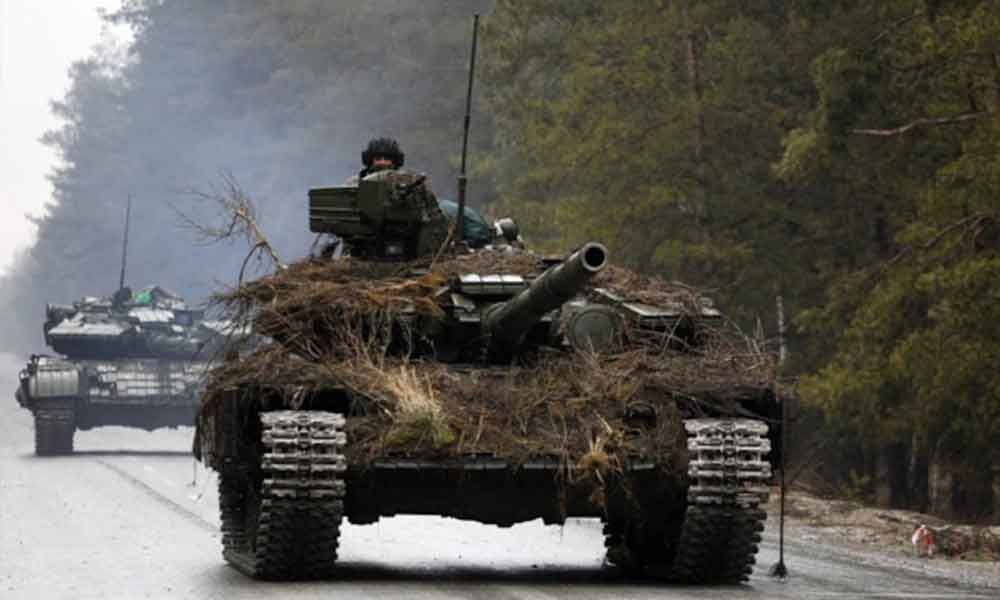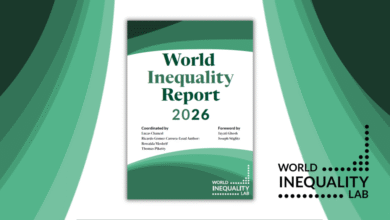Russia’s aggression on Ukraine: Will it lead to Nuclear War?
Siby K. Joseph
It was on February 21, 2022, Russia recognized the independence of two breakaway regions in eastern Ukraine viz. Donetsk and Luhansk . Russian President Vladimir Putin’s televised speech was looked upon as a harbinger of the Russian invasion of Ukraine. He warned the United States and NATO countries that they should not interfere in Ukraine. He said, “whoever tries to impede us, let alone create threats for our country and its people, must know that the Russian response will be immediate and lead to the consequences you have never seen in history.” These words of the defiant President were interpreted as a threat to use nuclear weapons in the case of a large scale war. The launch of Russia’s aggression on Ukraine on 24 February, 2022, brought into the limelight the possible threat of the use of nuclear weapons. President Vladimir Putin’s speech announcing a ‘special military operation’ in Ukraine on 24 February, boasted the most powerful nuclear capability of Russia and there was a veiled threat of use of nuclear weapons. In his speech, he said:” As for military affairs, even after the dissolution of the USSR and losing a considerable part of its capabilities, today’s Russia remains one of the most powerful nuclear states. Moreover, it has a certain advantage in several cutting-edge weapons. In this context, there should be no doubt for anyone that any potential aggressor will face defeat and ominous consequences should it directly attack our country.” It was further escalated when Vladimir Putin put Russian military forces on high alert on February 27. He said “I order the defense minister and the chief of the general staff of the Russian armed forces to put the deterrence forces of the Russian army into a special mode of combat service.” The “deterrence” the President referred to definitely includes nuclear forces. According to Russia’s nuclear doctrine of 2020, it “reserves the right to use nuclear weapons”, even in case of aggression against Russia with the use of conventional weapons when the very existence of the State is threatened.
The prolonged period of conflict between Russia and Ukraine and recent development created a feeling that it would result in an escalation of nuclear spending all over the globe and even a threat of use of nuclear weapons in the ongoing conflict. It is true that on April 25, 2022, Russian Foreign Minister Sergei Lavrov in a televised interview said that he was doing a lot to uphold the principle of striving to prevent nuclear war at all costs. He was of the view that NATO is engaged in a proxy war with Russia by supplying Kyiv with weaponry. At the same time he warned the West not to underestimate the elevated risks of nuclear conflict. He said “I would not want to elevate those risks artificially. Many would like that. The danger is serious, real. And we must not underestimate it.” US Secretary of Defense Lloyd J. Austin III held a News Conference Following Ukraine Defense Consultative Group Meeting, Ramstein Air Base, Germany on April 26,2022 . A question was asked about the risk for Putin to threaten to use a nuclear weapon? In his reply US Secretary of Defense said “Well, you know, you’ve heard us say a number of times that that kind of rhetoric is very dangerous and unhelpful. Nobody wants to see a nuclear war happen. It’s a war that, you know, where all sides lose.” But the situation was further worsened after Moscow halted gas supplies to Bulgaria and Poland for not paying in roubles.
The situation is pretty alarming because of the large stockpile of nuclear weapons possessed by Russia and NATO alliance countries . According to Stockholm International Peace Research Institute SIPRI Yearbook 2021, at the start of the year nine states—the United States, Russia, the United Kingdom, France, China, India, Pakistan, Israel and the Democratic People’s Republic of Korea (DPRK, or North Korea)—possessed approximately 13 080 nuclear weapons, of which 3825 were deployed with operational forces. Approximately 2000 of these are kept in a state of high operational alert. The country-wise bifurcation of nuclear weapons is as follows: Russia 6255, United States 5550, China 350 France 290, United Kingdom 225, Pakistan165, India 156, Israel 90 and North Korea 40-50 warheads respectively. According to the Federation of American Scientists, in 2021 five nations are hosting US Nuclear weapons. They are Turkey 50, Italy 40, Belgium 20, Germany 20, and Netherlands 20 warheads respectively. According to SIPRI Yearbook 2021, Russia has about 2585 offensive strategic warheads, of which roughly 1625 were deployed on land- and sea-based ballistic missiles and at bomber bases and the United States has about 1700 strategic and 100 non-strategic (or tactical) warheads—were deployed on aircraft, ballistic missiles, and submarines. The International Campaign to Abolish Nuclear Weapons (ICAN) report “Enough is Enough: Global Nuclear Weapons Spending 2020” estimates that the nine nuclear-armed countries spent $72.9 billion on their 13,000+ nuclear weapons in 2019, equalling $138,699 every minute of 2019 on nuclear weapons, and a $7.1 billion increase from 2018.
The Russian invasion of Ukraine has heightened the threat of nuclear escalation more than any time after the end of the Cold War. The futility and ineffectiveness of nuclear deterrence have been illustrated in the warlike situation prevailing in the world. Nuclear Experts are of the view that Russia may not engage in large scale nuclear war but at the same time they have not ruled out the possibility of Russia using a tactical nuclear weapon in Ukraine. Therefore, there is an urgent need to end this horrific conflict; otherwise in case of use of tactical nuclear weapons it may escalate to catastrophic global war where there is a threat of use of weapons by the parties involved in it. In the midst of these developments, it is encouraging that Austria announced the first meeting of State Parties of the Treaty on the Prohibition of Nuclear Weapons (TPNW) from 21-23 of June 2022. On 23 March 2022, The Republic of Côte d’Ivoire deposited its instrument of ratification of the United Nations TPNW. It is the fifth West African country to ratify the TPNW, following Benin, the Gambia, Guinea-Bissau, and Nigeria. The members of civil society organizations and institutions who work for peace and nonviolence across the globe have to wake up to face the threat of nuclear weapons. For that, all lovers should come together asking their governments to work towards nuclear disarmament by banning and eliminating the existential threat of these weapons.
The author is Director, Sri Jamnalal Bajaj Memorial Library and Research Centre, Sevagram AshramPratishthan,Sevagram, Wardha-442102 Maharashtra
Email: directorjbmlrc@gmail.com





